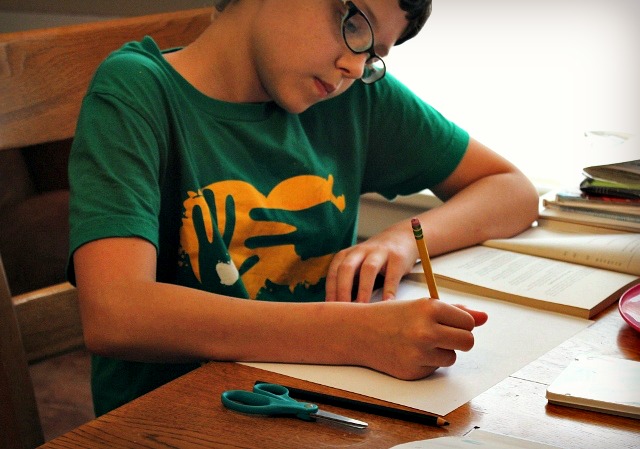When you are new to homeschooling the task of organizing, planning, and recording your learning experiences can be daunting. Part of the problem is the idea that homeschool records and schedules have to look like those of traditional schools.
Homeschool records don’t have to be a boring sheet of recorded grades.
One of the easiest ways to keep track of what you have studied at home is by showcasing your child’s work in a portfolio. Although not all states require portfolio reviews in order to homeschool, keeping one is a good idea. It gives you an easy way to prove what you have been accomplishing and it makes a great keepsake for years to come.
A homeschool portfolio, according to the site Successful Homeschooling,
“is a collection of documents, photographs and other items that you can use to show how your children are progressing and what they have achieved.”
What To Add To Your Portfolio
Anything can be included in a portfolio. Artwork, worksheets, reports, photographs of projects and activities, printed reports, tests, certificates, and even a list of books read or field trips taken.
Your portfolio can become as elaborate or as simple as you want, as long as you remember these tips:
- Keep only the best work and examples of progress. If you keep everything you will quickly run out of the room.
- Don’t do all the work yourself. Have your children come up with ideas of what to include in their portfolio.
- Think of everything as educational. Did you bake cookies together? Include a picture of your child measuring or add the recipe.
Think of the portfolio as a scrapbook of educational memories. I like to keep a small day-planner or journal to record the learning moments we experience each week. I include some of those notes, along with lapbooks and notebooking projects we do in our portfolio.
Now that we notebook a lot more, we use our notebooking binders as our main educational portfolio.
Mediums For Creating A Portfolio
You can make your portfolio out of a simple binder with plastic sleeves, or you can get elaborate and use scrapbook paper, portfolio envelopes, or have your papers spiral bound.
Creating a digital portfolio is also an option. Use a program like powerpoint, word, or another publishing software to make a professional looking document that highlights what you have been doing. You can also create a portfolio and host it online at a blog or other site. Digication is one site that hosts e-portfolios for a small yearly fee.
Having a portfolio is nice when family and friends are curious about what you do in your homeschool. You have a representation of all the exciting activities and adventures you encounter along the way!


